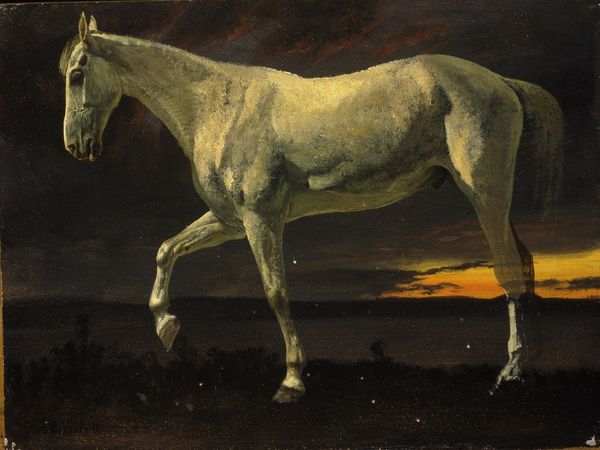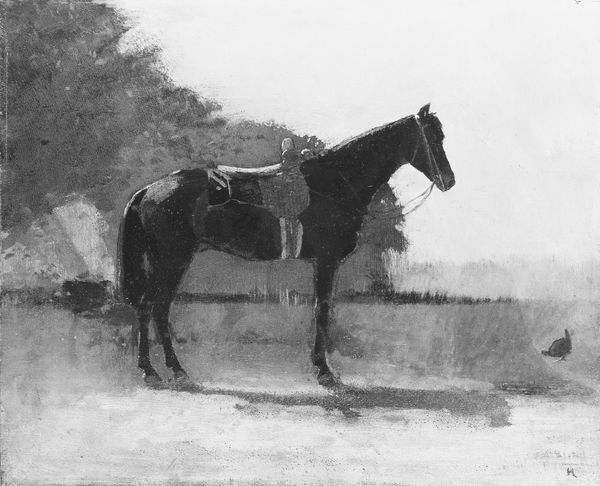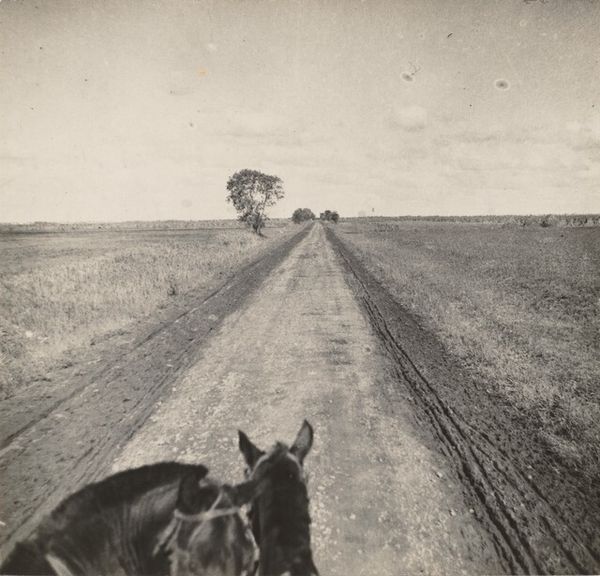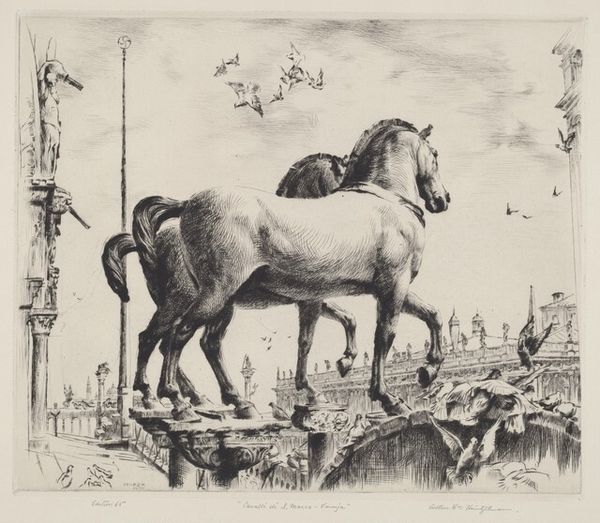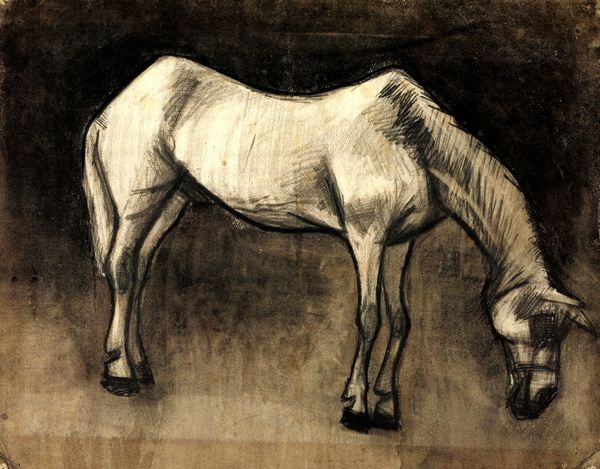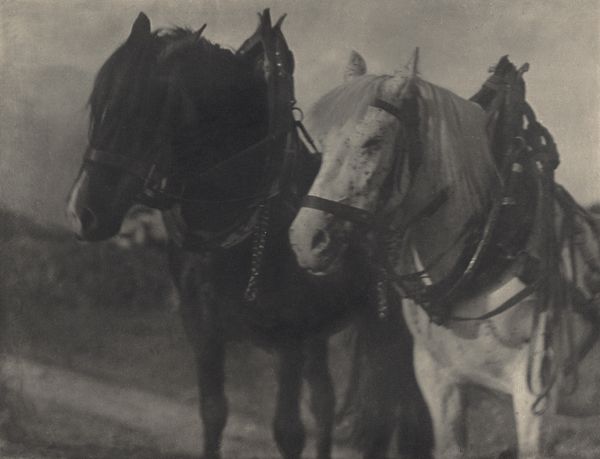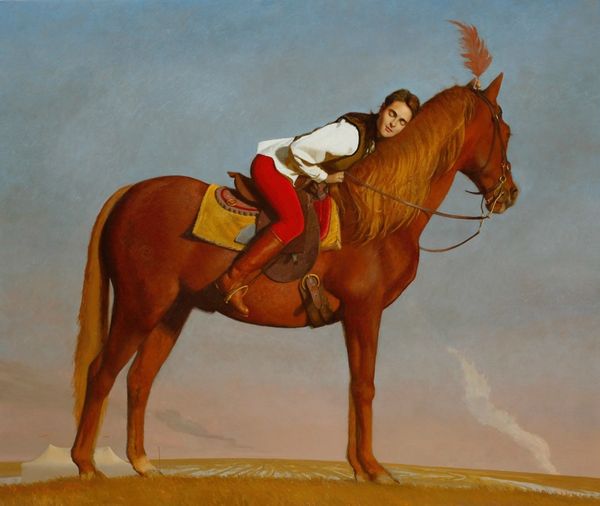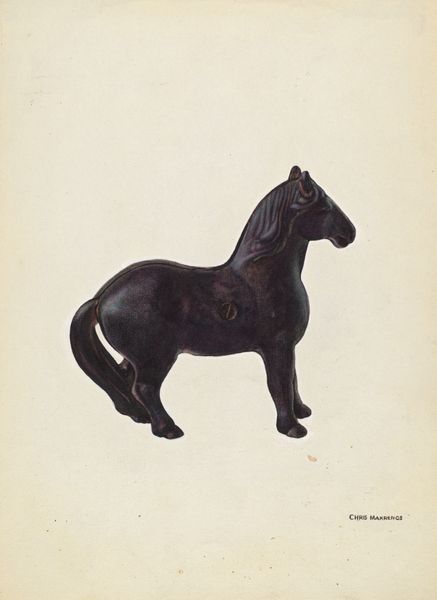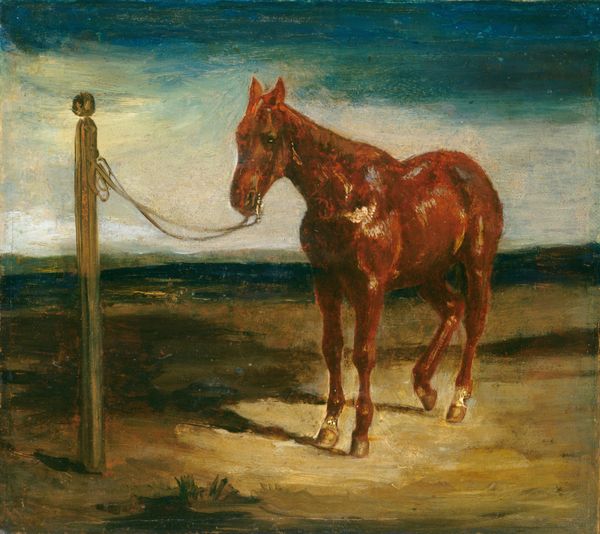
painting, oil-paint
#
painting
#
oil-paint
#
landscape
#
figuration
#
oil painting
#
animal portrait
#
horse
#
modernism
#
realism
Copyright: A.C.Fine Art Inc.
Curator: Alex Colville’s 1954 painting, "Horse and Train," presents a striking image: a horse galloping directly towards an oncoming train on a railway track. The piece is rendered in oil paint, typical for Colville's meticulous realism. Editor: There's an immediate tension created. The impending doom is palpable. The horse seems caught in an irreversible trajectory. Curator: Absolutely. This collision, or the anticipation of it, invites many interpretations. Given the time it was created, we can read it through the lens of post-war anxieties and technological advancement rapidly overtaking more traditional ways of life. The horse, a symbol deeply entrenched in agrarian societies, confronts the industrial revolution head-on, embodied by the train. Editor: And it's all so methodically created. Look at the railway lines—their materiality so emphasized through Colville’s use of texture. You can almost feel the vibrations as the train rushes closer. This speaks to how labor itself reshapes landscapes, doesn't it? These tracks, this machine—all requiring collective effort. The contrast is stark against the lone horse. Curator: Yes, it pushes us to contemplate not just the horse's plight, but what it signifies about broader social power dynamics. The impending clash is symbolic of larger conflicts and power imbalances—the horse perhaps symbolizing freedom and nature against the controlling, forward momentum of technology. Consider that both animals and machinery become subjects of progress and ultimately commodities within that. Editor: The vastness of the landscape plays into this too. There’s space here, raw materials, transformed into fuel for this destructive, or constructive, machine. Colville clearly invites reflection on the human drive for efficiency and its environmental and existential cost. Curator: Precisely. "Horse and Train" uses the raw elements of realism to expose complex undercurrents of its time. Its visual tension becomes a space for critiquing the cultural narrative around so-called ‘progress,’ where intersectional components like labor, land use, and freedom compete. Editor: Looking closely at Colville's detailed treatment of the horse, then shifting focus towards the locomotive in the distance—the means of making in contrast here, really foreground those anxieties. This isn't a romantic view, but a stark industrial rendering with a dark heart. Curator: In conclusion, “Horse and Train” remains relevant for its piercing exploration of humanity's relationship with technology, nature, and ultimately, itself. Editor: Indeed. The painting encourages us to reflect on how systems of production alter the course of society in potentially destructive and irreconcilable ways.
Comments
No comments
Be the first to comment and join the conversation on the ultimate creative platform.

